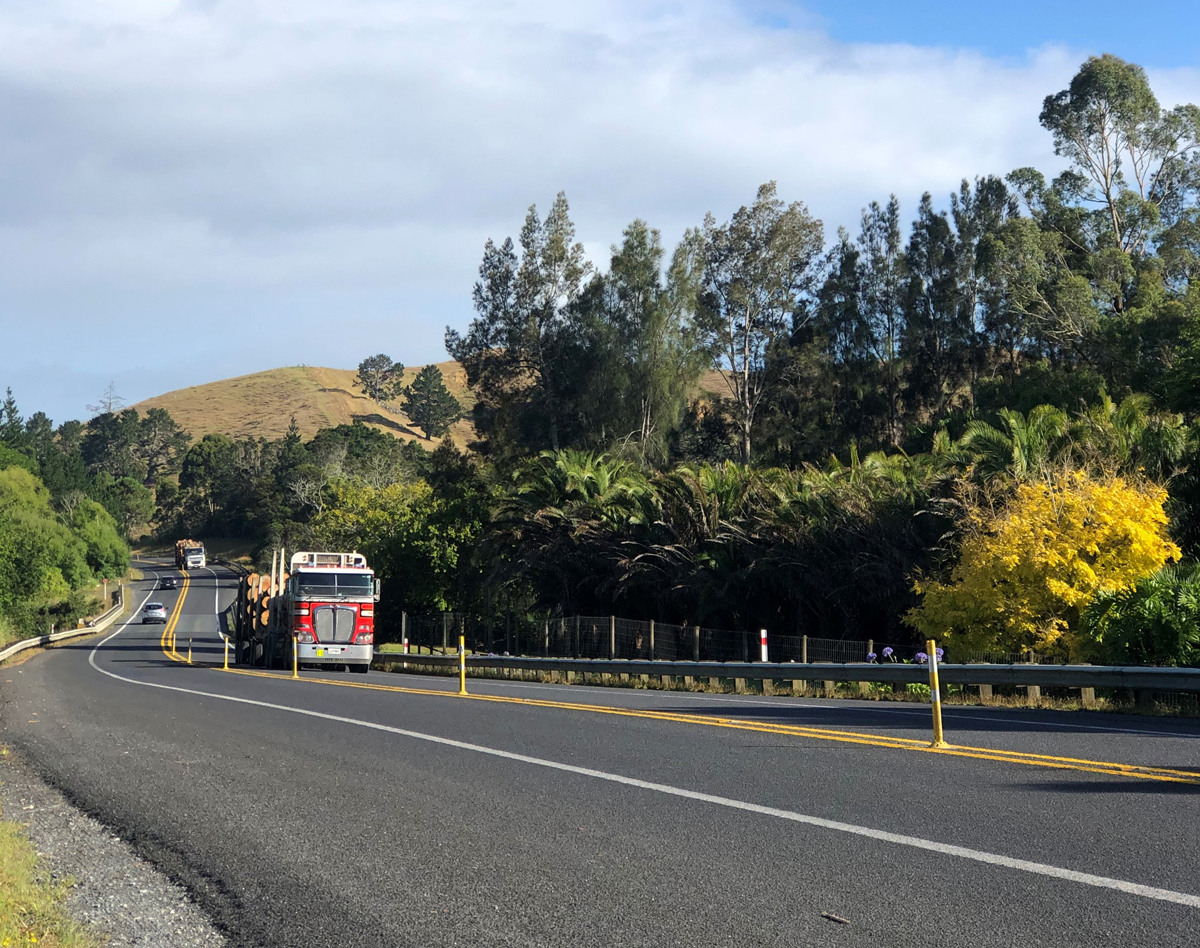Safety improvements on State Highway 1 south of Whangārei are proving their value and saving lives, says Waka Kotahi NZ Transport Agency.
Flexible safe hit posts were installed in June 2018 on the 10km stretch of SH1 between Toetoe Road and Springfield Road, along with a half metre wide centreline with yellow no passing lines and raised reflectors.
In the five years before the safe hit posts were installed, there were nine deaths in crashes and 25 serious injuries on this stretch of SH1. In the three and a half years since they were installed, there has been one fatality and five serious injuries. Nearly 20,000 vehicles on average use this road every day.
“The safety posts and road markings are making a difference on a busy road that is undulating and winding with limited visibility and room for safe passing manoeuvres,” says Waka Kotahi Director of Regional Relationships, Steve Mutton.
“The centreline safe hit posts are designed to stop drivers crossing the centre line – either in error or to overtake other vehicles - and putting themselves and other drivers at risk.”
Further south, flexible wire rope safety barriers on the northern side of the Brynderwyn Hills in 2015 have improved safety, with no fatal crashes since their installation.
This section of SH1 was considered high-risk with five deaths and four serious injuries between 2006-2010. The Brynderwyn Hills Improvement Project, completed in 2017, improved safety by widening the road and shoulders, removing tight corners and installing 14km of safety barriers along the edge of the road and the centre line to separate north and south bound traffic.
Since the barriers were installed five years ago, there have been five serious injuries and no deaths. Last year the barriers were hit 15 times.
Flexible barriers catch you before you hit something harder like a pole, tree or oncoming car. If you hit a flexible barrier, the steel cables flex, slowing down your vehicle and keeping it upright. They absorb the impact so you and the people with you, don't.
“Each time the barriers are damaged we know that a serious crash has been avoided, and someone has either driven or walked away from the incident. Each time the centre line barrier is damaged we know a potential head on collision has been avoided,” says Steve Mutton.
This is the best possible outcome for road users and proof that these barriers are highly effective in preventing deaths and injuries. We’re really pleased to see these safety improvements paying dividends”.
Installing infrastructure solutions like flexible road safety barriers and reviewing speed limits are part of Road to Zero 2020–30, the Government’s road safety strategy. It aligns with the safe system approach and acknowledges that even responsible people sometimes make mistakes when driving, and aims to minimise the impact of those errors. Road to Zero aims to reduce deaths and serious injuries on our roads by 40 percent over the next 10 years.
Further safety improvements – including widened centrelines and road shoulders, rumble strips and safety barriers – are planned on the state highway corridor between Whangārei and Port Marsden Highway (SH15). Work is planned to start in April and take approximately 12 months to complete. This is the first and northernmost stage of a larger project to improve safety on SH1 between Whangārei and Wellsford.
The safety improvements will remain in place until the upgraded four-lane corridor between Whangārei and Port Marsden Highway is completed in 2028 as part of the NZ Upgrade Programme’s $6.8 billion investment to save lives, get our regions moving and boost productivity.

The centreline safe hit posts on SH1 south of Whāngarei improve safety by stopping accidental crossing of the centreline and overtaking.